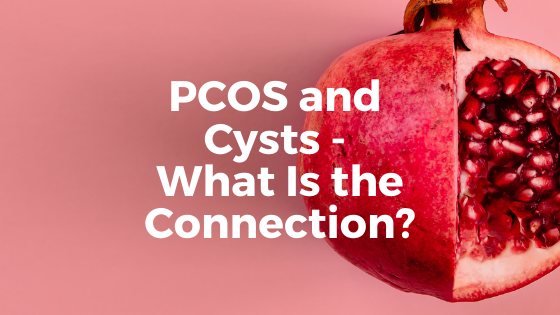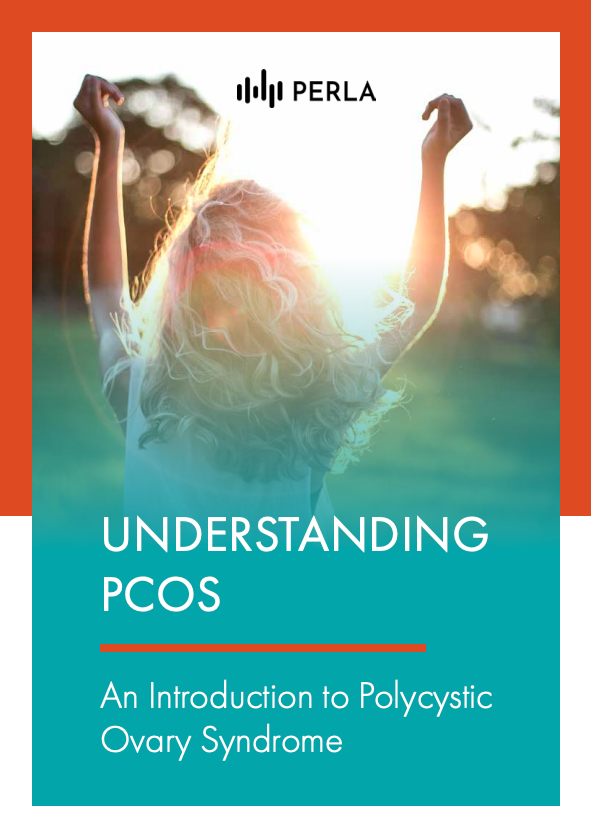Many would argue that the name Polycystic Ovary Syndrome is misleading. First, the “cysts” that may be present in the ovaries of women with PCOS are not actually ovarian cysts per se, but rather fluid-filled follicles. Second, it points to the polycystic ovaries as the cause of the condition, which is simply not true.
But let’s explore the connection between PCOS and ovarian cysts in more detail!
The Link Between PCOS and Cysts
PCOS has undergone several name changes over the years from Stein-Leventhal syndrome to Polycystic Ovary Disease (PCOD) before settling on Polycystic Ovary Syndrome (PCOS). The change from PCOD (disease) to PCOS (syndrome) is to emphasize the heterogeneous nature of the condition. After all, it is not a single disease entity, but a number of different symptoms and findings, which is described as a syndrome in medical terminology.
PCOS Diagnostic Criteria
The most widely used diagnostic criteria for PCOS was developed in the ESHRE/ASRM-sponsored consensus workshop in Rotterdam, Netherlands.1 They consist of:
The 2003 Rotterdam Criteria for PCOS (2 of 3 are required)
- Oligomenorrhea (irregular menstrual periods) or amenorrhea (absence of menstrual periods)
- Hyperandrogenism (excess androgen hormones in the blood)
- Polycystic ovaries (on the ultrasound)
As only 2 out of the 3 criteria are required, you can see that PCOS can occur with or without polycystic ovaries (PCO). So having irregular periods and signs of hyperandrogenism, such as hirsutism (excess hair growth), acne, or hair thinning, are enough to be diagnosed with PCOS.
But what exactly are Polycystic Ovaries?
Polycystic Ovaries (PCO)
The word polycystic means many cysts. Women with PCOS may develop multiple “cysts” in their ovaries that appear like a “string of pearls” in an ultrasound image. These normally do not cause pain and do not need to be removed or treated with medication.3 Around three out of four women with PCOS have polycystic ovaries. The “cysts” in polycystic ovaries are not actually cysts, but rather immature follicles, so egg follicles that did not mature completely due to high levels of androgens.
If your scan shows polycystic ovaries, it means:4-6
- one or both of your ovaries are enlarged (more than 10 ml)
- there are more than 12 partially developed follicles in the ovary (2-9 mm in diameter)
Polycystic Ovaries are one of the features of PCOS, but if they appear on your scan, it does not necessarily mean that you have PCOS. Ask your doctor about the next steps in your specific case.
Ovarian Cysts
There are also a number of “true” ovarian cysts, so fluid-filled sacs that grow on or within the ovaries. Most ovarian cysts are non-cancerous and may resolve spontaneously without treatment.7 They are often described as functional cysts, meaning they form during the menstrual cycle and are not related to any diseases.
Even thought ovarian cysts may lead to symptoms such as pelvic pain, bloating, pain during sex, an increased frequency of visiting the restroom and irregular menstruations or a change in your menstrual cycle, there are also many women may not even know that they have them.8 There are also a number of abnormal or pathological cysts, which require medical treatment. If you have any questions about ovarian cysts, symptoms you may experience or your specific situation, ask your doctor or healthcare team.
Conclusion
As you can see, the name Polycystic Ovary Syndrome (PCOS) is not necessarily the best way to describe the syndrome, as the “cysts” are not a hallmark of the condition, and are not even cysts per se. If you experience any symptoms of PCOS, such as excess hair growth (hirsutism), irregular menstruation, weight gain, acne, difficulty to conceive, anxiety or depression, or symptoms of ovarian cysts such as pelvic pain, pain during sex, or bloating, make sure to discuss them with your doctors, as they can find out more about the cause and discuss treatment options with you.
Sources:
- Chang J, Azziz R, Legro R, Lobo RA. Revised 2003 consensus on diagnostic criteria and long-term health risks related to polycystic ovary syndrome (PCOS). Human Reproduction. 2004;19(1):41-47. doi:10.1093/humrep/deh098
- Campbell S, Bhan V, Whitehead MI, Collins WP. Transabdominal ultrasound screening for early ovarian cancer. Br Med J 1989; 299:1363–7.
- Knudsen UB, Tabor A, Mosgaard B, et al. Management of ovarian cysts. Acta Obstetricia et Gynecologica Scandinavica. 2004;83(11):1012-1021. doi:10.1111/j.0001-6349.2004.00607.x
- Muto M. Patient education: Ovarian cysts (Beyond the Basics). www.uptodate.com. Published February 13, 2019. Accessed November 4, 2020. https://www.uptodate.com/contents/ovarian-cysts-beyond-the-basics/print
- Bachanek M, Abdalla N, Cendrowski K, Sawicki W. Value of ultrasonography in the diagnosis of polycystic ovary syndrome – literature review. J Ultrason. 2015;15(63):410-422. doi:10.15557/JoU.2015.0038
- Smet M-E, McLennan A. Rotterdam criteria, the end. Australasian Journal of Ultrasound in Medicine. 2018;21(2):59-60. doi:10.1002/ajum.12096
- Dept. of Health and Human Services Office on Women’s Health. Ovarian Cysts. medlineplus.gov. Accessed November 3, 2020. https://medlineplus.gov/ovariancysts.html
- NHS. Ovarian cyst. nhs.uk. Published October 23, 2017. https://www.nhs.uk/conditions/ovarian-cyst/


